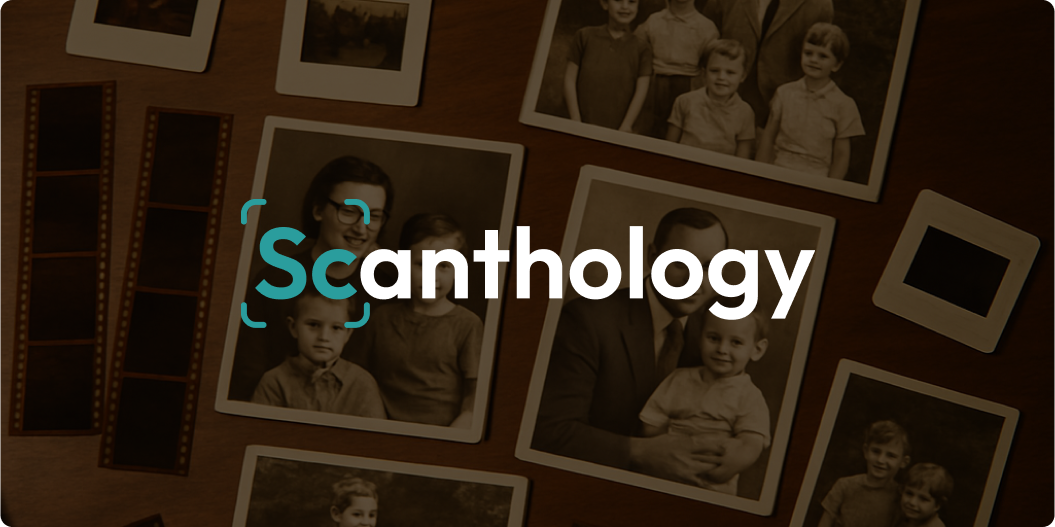For over a decade, Scott Crawford, founder of Scanthology, has been quietly digitizing thousands of family photos, heirloom film reels, and historical artifacts. Over the years, he’s handled everything from fragile glass plate negatives to decaying VHS tapes pulled from closets and attic-stored boxes. What began as a personal preservation project has grown into a full-service, white-glove archival business—and now, to serve families, collectors, broadcasters, and institutions across Southeast Michigan and beyond.
To support that work, after years of hands-on experience and growing demand, we’re opening a new chapter:
Welcome to the Scanthology Blog.
This is where we’ll share what we’ve learned—one post at a time. Some stories may be fun or even funny. Some may be technical. Some may be instructional. If it relates to Scanthology and the work that our Scanthologists do—you may find it here.
What is a Scanthologist?
We’ll cover this more in depth later, but briefly, at Scanthology, we’ve coined a new term for the people behind this work: scanthologists. A scanthologist is a specialist trained in the careful digitization of analog photographs, films, slides, and documents—someone who not only scans, but curates, preserves, and helps build the anthologies of our lives through analog-to-digital translation. Every member of our team shares this title and this overall purpose.
Why a Blog, and Why Now?
We’ve always believed that preserving history should feel empowering, not overwhelming. But too often, people find themselves stuck: unsure of where to begin, which formats are worth scanning, or what settings actually matter.
That’s where this blog comes in.
After digitizing tens of thousands of images and speaking with countless people in our community, we’ve heard the same questions over and over:
- What is DPI, and why does it matter?
- Should I scan prints or negatives?
- Can old slides really be restored?
- What’s the best way to preserve delicate originals?
To answer these questions, we’re building a toolbox of knowledge—designed to guide anyone navigating the digitization process. Whether you’re doing it yourself, just want to understand what you’re paying for, or want to keep your digitizing partner honest, this blog is for you.
What You Can Expect
In the coming weeks, we’ll be releasing a series of foundational posts to demystify the technical side of scanning:
- What Is DPI and Why Does It Matter?
- Image Resolution Explained: Pixels, Prints, and Screen Sizes
- DPI vs. Resolution: How to Avoid Common Scanning Mistakes
- How Infrared Scratch Removal Works (and When It Doesn’t)
We’ll also dig into topics specific to the materials we handle—35mm negatives, Polaroids, Disc film, even rare glass plates. If it can be digitized, we’ve likely done it. And we’re happy to share what we’ve learned.
Yes, we’ll show you real-world examples—including before-and-after images that illustrate just how powerful the right scanning method can be.
We’ll Stay Current—Because You Are
This isn’t just a static archive of how-tos. We’ll also write about:
- Interesting or unusual projects we’re working on
- New equipment we’re testing or refining
- Great questions from customers
- Emerging technologies or shifts in digitization trends
That means the blog will be more than informative—it’ll be relevant, timely, and maybe even a little fun.
The Long-Term Vision
We know not everyone who visits Scanthology is ready to hire a professional service right away. Some are just exploring. Others are deep into DIY efforts.
Wherever you are on the journey, we want this blog to be a trustworthy and approachable resource—a place to learn, ask questions, and feel more confident preserving your most meaningful stories.
Whether you’re working through a shoebox of faded Polaroids, organizing a family archive of WWII-era negatives, or managing a broadcast station’s long-forgotten Betacam collection, we’re here to help—with premium tools, expert care, and a white-glove approach every step of the way.
Let’s Begin
We’re excited to get started—and even more excited to have you along for the ride.
Our first educational post will be live soon: What Is DPI and Why Does It Matter for Scanning? It’s a deep dive into one of the most misunderstood (but essential) parts of the digitization process.
Until then, welcome. Let’s preserve something incredible together.
— The Scanthology Team
